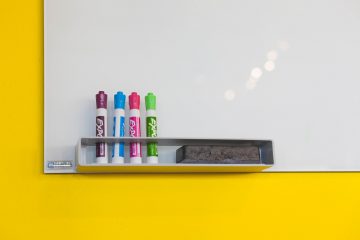2013’s fifth most popular post is about giving up on the idea that you can control what vocabulary students acquire, while engaging students in activities that really deepen their vocabulary.
A few months ago, as part of the student choice homework activity, one of my best AP students chose to label ten items in her house she didn’t know the word for and keep the labels up for one week. She probably is the student with the most chance of success on the exam. Her sister scored a 4 two years ago and she might just outdo her and score a 5 because she’s so good at multiple choice and source integration. You’ll never believe one of the words she’d labeled, a word she’d been struggling to remember all along: window.
Really? Window? She got all the way to AP Spanish, with vocabulary lists and stories and discussions, and hadn’t acquired the word window? She can give you words like environment and random and wake up very early but not window? You got it.
Last month my colleague and I took a group of students to tour and explore the avant garde Spanish immersion program at Georgetown College here in Kentucky. One of the activities was to make a maraca using two plastic spoons, a plastic Easter egg, a handful of corn kernels, and tape. The leader gave instructions in Spanish and the students completed the task. Guess what word my students couldn’t come up with? Not even my AP students. Not even my AP student who lived in Spain until he was 9. Spoon. You can imagine how I felt!
These two situations illustrate some very important principles about vocabulary:
- Give vocab lists and vocab quizzes all you want – you cannot control the vocabulary your students do and don’t acquire.
- Creating long-term memory is a lot more complicated a process than your textbook and your decontextualized crossword puzzles want you to believe.
- WordReference in their pocket does not make them proficient.
So, what can you do about it? If you can’t control what vocabulary they acquire, what are you there for? Of course, there are several important things you can do to encourage a rich, broad vocabulary in your students.
- Realize that your vocab lists are a starting point and nothing more. They are not a list of words your students will know at the end of the chapter.
- Let students add to their vocab lists or build them on their own based on what they need, because what they need is what their memory will hold on to.
- Provide opportunities to explore target-language content on a daily basis using authentic materials. Vocabulary in context builds long-term memory. Our favorite authentic materials are songs and novels.
- Capitalize on funny or emotional situations because these encode better memory connections.
- Use student assessments to give examples of shallow and deep vocabulary (one recent example for us was está en and está ubicado en).
Above all, don’t sweat it too much. We’ve been approaching vocabulary in our language teaching system completely wrong for a long, long time. If you approach teaching language as giving students tools and experiences for the language they want and need to use, the vocabulary will develop. If you drill and quiz too-long lists of generalized, decontextualized words, you’ll find that the only thing you controlled was when numbers went into your gradebook.
Foto credit: Leire Etxaniz Sanz
1 Comments
Comments are closed.





[…] vocabulary lists include way too many prepositions. Take a deep breathe, remember that you can’t control vocabulary, resist the pressure to cover too much content, and determine to deeply practice a few at a time, […]